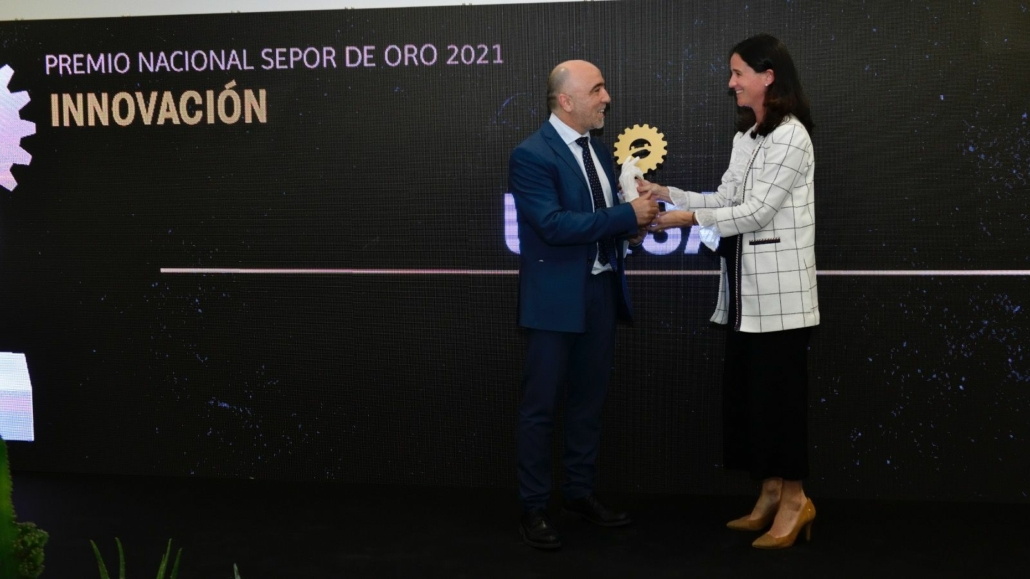CALL FOR TENDER
Publication date: October 11, 2021
Tender for the selection of a promotion body for the development of a multi-annual program REA EU 1144/2014 for the promotion of poultry.
PROMOTION PROGRAM IN BELGIUM, FRANCE, SPAIN AND GERMANY
1/ CONTEXT
The Asociation:
AVEC (Coordinator)- Association of poultry processors and poultry trade in EU countries
AVEC is the voice of the European poultry sector. AVEC facilitates communication between international organizations and decision-makers and focuses on key areas such as animal health and welfare, food safety and quality, trade and sustainable development. AVEC members are national associations from 16 EU Member States + 1 associate member from the United Kingdom.
AVIANZA – the Spanish Poultry Meat Association (previously called Propollo)
The Spanish Poultry Meat Association -AVIANZA- has more than 65 associated companies, integrating more than 95% of the poultry meat market. In this sense, we have more than 5,000 farms, 281 slaughterhouses and cutting plants, as well as more than 40,000 workers who work for the poultry meat industry in Spain.
BVG – Bundesverband der Geflügelschlachtereien e. v.
The BVG – Bundesverband der Geflügelschlachtereien e. V. is the professional organization and the sole representative body of the German poultry slaughter and processing industry. Its 33 members – mainly poultry slaughterhouses, poultry meat processors and marketers – represent more than 93% of the German poultry processing sector. As a specialized branch focusing on issues of the poultry processing industry, BVG is a member of the umbrella and top organization of the German poultry industry, the ZDG – Zentralverband der Deutschen Geflügelwirtschaft e. V. (German Poultry Association).
ICPC – French Interprofessional Broiler Committee
Since its origins in 2007, CIPC is a French poultry association that represents 85% of the broiler sector and each of its fields: hatchery, livestock, animal feeding, slaughterhouses. Based in Rennes, close to the main poultry production areas, it develops its network and experience to offer a variety of services available from professionals to scientists and closely linked to administration. The ICPC allocates its means and resources to broiler production, with a dedicated board member and survey activities. The French production volume in 2019 is estimated at 1,754 thousand Tec of poultry, including 222 MTec of ducks, 326 MTec of turkeys and 1,173 MTec of broilers.
SUST EU POULTRY – the Programme:
This program aims to raise awareness and promote European meat and poultry production methods, highlighting its commitment to creating the most sustainable and environmentally friendly European agri-food sector. The program focuses on the three factors of sustainability: the environment, the economy and society. The proposing organizations span four different European markets giving the program an ambitious European dimension and will focus on four different target markets: Belgium, Spain, Germany and France.
While the efforts and measures of the European poultry sector when the new Biodiversity and Farm to Fork strategies[1] were launched as part of the Green Deal[2] have been a great boost, there is still a tendency to identify the sector as a which has no beneficial role for climate action and the environment. For this reason, the aim of this program is to highlight the sustainability of EU agriculture for consumers, highlighting its commitment to climate change mitigation and underlining that the consumption of European poultry meat is beneficial for an sustainable European environment, society and economy.
With a total budget of more than 3 million euros and numerous promotional and information activities in Belgium, Spain, Germany and France, the association will not only use online and offline channels to communicate the message, but will also organize different events, tasting and workshops to reach the largest number of consumers possible. The impact this program will have on the European poultry sector will also encourage other key industry players to work on their sustainable products and production methods.
General objectives:
'Highlight the specific characteristics of agricultural production methods in the Union, in particular in terms of food safety, traceability, authenticity, labeling, nutritional and health aspects, animal welfare, respect for the environment and sustainability, and the characteristics of agricultural and food products, especially in terms of quality, flavor, diversity or traditions", is the general objective of this program.
If consumers are aware of the sustainable characteristics of the European poultry sector compared to the same products from third countries, they can prioritize poultry produced in the EU and make informed choices. Within this programme, our aim is to promote European poultry meat products, more specifically products originating mainly from chicken and turkey.
Contribution to the environment
This programme, based on the sustainability of European products and production methods, aims to support the European poultry meat sector through communication activities based on the strategies that the proposing organizations and all their partners are implementing to make more sustainable its production processes and its environmental impact. These strategies are in line with the European Farm to Fork and Green Deal strategies, both based on achieving more ecological and sustainable production systems, among other objectives.
This program also aims to adapt to new market trends in poultry meat consumption, as well as the environmental demands that people increasingly place on producers.
2/ TENDER
The hiring of a specialized executive agency is necessary to plan and execute the actions covered in this program once AVEC and its partners have signed the Grant Agreement. The partners expect a sustainable partnership with the implementing agency, based on high mutual trust, considering the budgets involved and the need to maintain the partners' trust through the proposed programme.
The agency will interact with AVEC as Coordinator, but also with all partners individually to implement the program in their respective target countries.
The program will have a global budget of more than 3 million euros and has a total duration of 2 years. It focuses on three main audiences: young people, family decision-makers (who would form the final consumer section) and key opinion leaders, in Germany, France, Belgium and Spain.
Open bidding conditions:
- The objective of this tender is the application for a promotion program co-financed by the EU EEA agency. If European funds are not guaranteed, the tender will be considered void.
- This offer is unpaid. Unselected applicants will not receive any financial compensation.
- All information sent to selected applicants will be treated as strictly confidential, and due to the institutional nature of the data, it cannot be used for other clients.
- The AVEC will send to candidates who request it technical information on the selection of target markets and the objectives of the program for the preparation of their proposals.
- The selection criteria will ensure the best value for money in accordance with Regulation (EU) No 1144/2014 of the European Parliament.
- Once the creative work is submitted by the applicant, it becomes the property of the awarding entities without limitations of time and space, and this includes its use for all methods and means of communication.
- The contracting entities reserve the right to use creative concepts (images, logos, slogans and domain names) in the context of other own campaigns and without time limitations.
- The selected body will sign a contract with the contracting entities.
- No costs will be incurred before a framework agreement has been signed between the contracting entities and the European Commission, and a framework agreement between the contracting entities and the implementing body.
Mandatory elements that applicants must present:
Candidates must propose a strategic plan for the development of a multiple promotion REA program in the aforementioned markets with the objective of improving the image of poultry products and boosting their consumption.
The detailed proposal (PowerPoint format is preferred) must be submitted in English to Ms. Birthe Steenberg ([email protected]) and include:
- A dated and signed request letter accepting the bidding conditions.
- A presentation from the agency that includes proof of being up to date with tax payments, information on its financial viability, on its competencies to support the association with these missions and on its knowledge of the rules relating to promotion programs financed by The EU
- A proposal based on the knowledge of the target countries regarding the production, consumption and consumption habits of poultry meat. The agency must be able to propose a series of actions based on the different criteria established in the proposal.
- The organization must describe the objectives, the target audience, as well as the planned products and must include a budget proposal for each action within the general framework defined for that campaign.
- Affidavit duly dated and signed by the applicant declaring any possible conflict of interest arising from the work carried out by an institution in the poultry sector in any of the markets covered by the campaign.
The proposal must take into account the mandatory EU signature and other graphic elements, as stipulated in Regulation EC/1144/2014 and the corresponding legislation. The selected executive agency must strictly comply with these criteria for all actions planned and carried out, as non-compliance with these EU rules would result in ineligibility of the actions and loss of funding. In the event that our application does not lead to the signing of the grant agreement, the execution of the campaign should of course have no purpose and this offer would be null and void.
3/ SUPPORT ACTIONS
The selected implementing agency will support the beneficiaries in the implementation of the following measures provided for in this programme:
- Public relations activities (public relations office and press releases)
- Digital communication (campaign on social networks, online advertising, digital events, etc.
- Organization of events such as exhibitions/conferences/webinars/
- Advertising in different media (press, online, television, outdoor,…)
- …
The agency will have to propose how to articulate and adapt all these actions to the different target countries, as well as demonstrate its experience in the different fields of activities.
The agency will have to propose how to articulate and adapt all these actions to the different recipient countries. The AVEC will send to candidates who request it technical information on the selection of target markets and the objectives of the program for the preparation of their proposals.
An evaluation agency will also be selected to audit the program. The selected body is expected to facilitate the work of the evaluation body, as necessary, throughout the project, e.g. For example, provide the information requested by the evaluation body, participate in occasional meetings and accept its recommendations.
4/ SELECTION CRITERIA
The selection will be made by a jury made up of the AVEC team, as well as the other 3 partners from France, Germany and Spain participating in the project.
Selection criteria:
- Quality and coherence of the strategy, argumentation of the proposed actions (30 points)
- Value for money (20 points)
- Understanding and strict compliance with EU promotion rules (20 points)
- Experience in EU promotion projects/communication actions, in particular on sustainability aspects, as well as quality of information provided on the financial viability of the Agency (20 points)
- Qualifications of the project management team and experience in the 4 target countries (10 points)
5/ PROPOSED PLANNING
November 15, at the latest, 6:00 p.m.: Deadline to submit the application for the tender
November 29 at 6:00 p.m.: notification of the elected agency and detailed notification to the other non-elected agencies
6/ CONTACTS
Ms. Birthe Steenberg, General Secretary of AVEC ([email protected]) is available to answer any questions candidates may have (tel: + 32 (0) 492 10 75 71).
[1] European Commission – https://ec.europa.eu/food/farm2fork_en
[2] European Commission – https://ec.europa.eu/clima/policies/eu-climate-action_en

